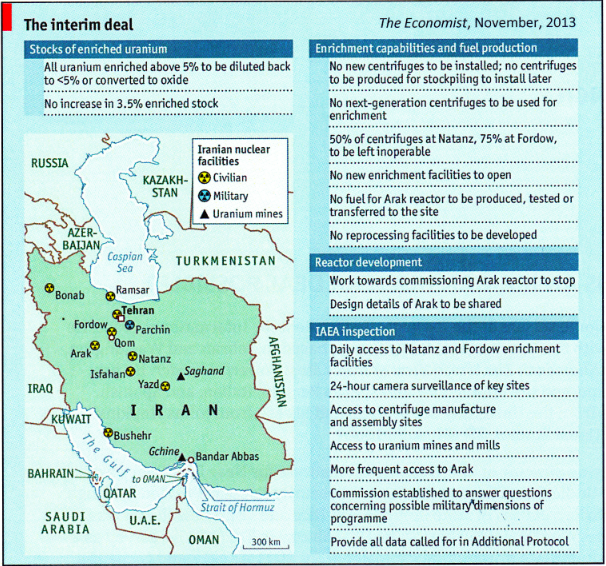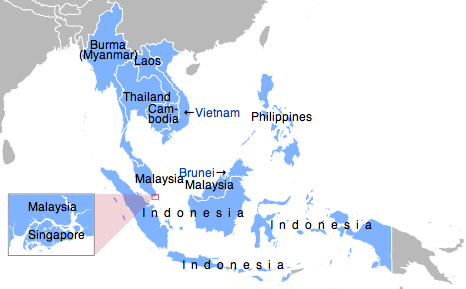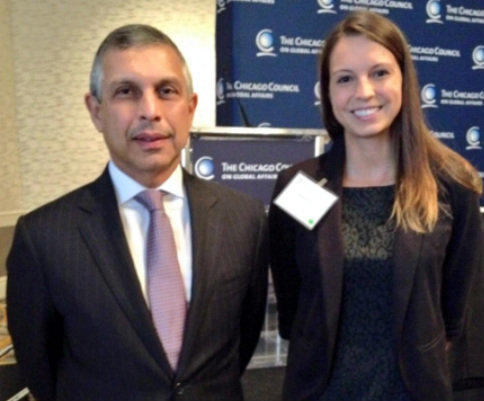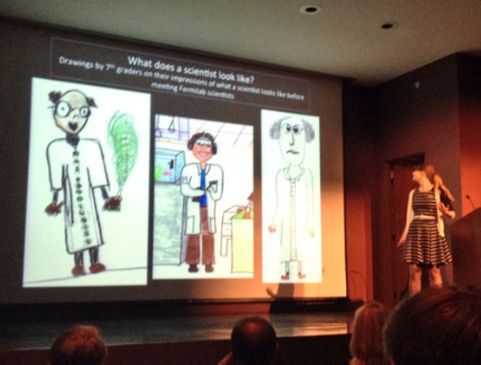|
The International Atomic Energy Agency (IAEA) does more than just safeguard nuclear material, they also have many programs to assist countries using nuclear technology. The Food and Agriculture program is assisting Morocco with malnutrition issues, as highlighted in the video below. What do you think about using vitamin fortification to battle malnutrition?
1 Comment
By Lenka Kollar The Chicago Council on Global Affairs hosted yet another great panel last week to discuss the Iranian nuclear deal with Karim Sadjadpour, senior associate at the Carnegie Endowment for International Peace, and Michael Singh, managing director at the Washington Institute for Near East Policy. The deadline for the provisions in the interim deal, outlined below, is July 20, 2014, with the option for a 6-month extension. Even though almost all policymakers in Washington are concerned about nuclear weapons in Iran (the latest sanctions were approved 100-0 in the Senate), there is significant debate on what a satisfactory deal with Iran should be. Singh explains that while the end goal is the same, the last two administrations think differently about how the situation in Iran will be resolved. Bush believed that a strategic shift in the region would be necessary for Iran to lose desire in having nuclear weapons while Obama sees it the other way around; Iran's decision to not have nuclear weapons would result in a strategic shift in the region. Sadjadpour follows up with the legacy that Obama wants to leave in foreign diplomacy, "Obama doesn't want Iran to get a bomb and he doesn't want to bomb Iran." The main debate among policymakers is about what would constitute a good deal with Iran. Many think that this interim deal is not enough and argue that the breakout time (estimated time to produce a nuclear weapon) has not changed. Singh believes that a good deal must not only focus on breakout time but also include provisions for inspections (international safeguards), ballistic missiles, and weaponization research. It is extremely difficult to outline provisions that would absolutely guarantee that Iran is not creating a nuclear weapon. Sadjadpour is concerned about the people of Iran and their well-being and says that Iran's nuclear program, along with the associated sanctions, is significantly costing the country. Even though the uranium from the enrichment facilities could be used in Iran's commercial nuclear power program, it still costs about a tenth of the amount to purchase low-enriched uranium rather than to develop and enrichment program and produce it yourself. So people ask, why doesn't Iran just purchase nuclear weapons? The reality is that it is very difficult to acquire nuclear weapons from other countries and all nuclear weapons programs in the world today were developed indigenously. The outcome of this interim deal with determine the path forward for negotiations with Iran to stop their nuclear weapons program and lift economic sanctions. What do you think would constitute a successful deal with Iran going forward? The Chicago Council provided some additional related references:
Watch this great TEDx talk about nuclear energy history and perception. Don Miley has worked at the Idaho National Laboratory for more than two decades. He gives tours of the Experimental Breeder Reactor I, the world's first electricity-producing nuclear power plant. What do you think of when you hear the word "nuclear"?
By Lenka Kollar Last week I was thrilled to attend a lunch program with ambassadors from the countries of the Association of Southeast Asian Nations (ASEAN), hosted by The Chicago Council on Global Affairs. The ambassadors present at the lunch and on the panel included:
With a combined GDP of more than $2.2 trillion and a population of 620 million people, the ten ASEAN member states represent a region of critical economic and geostrategic importance to the United States. ASEAN is the third-largest Asian trading partner of the United States, after China and Japan, and U.S. investment in the region is growing. Ambassador Mirpuri of Singapore outlined that that main goals of ASEAN are to create a production base that is economically competitive, ensure equitable development for all member states, and to fully integrate with the global economy. The United States has been critical to the success of ASEAN over the past 50 years and will continue to be essential in the future. The panelists were asked an important question by the moderator prompting them to discuss what factors will be important to ensure future economic growth in the region. The ambassadors stated that ASEAN is well-prepared for future growth, but no mention was made of meeting future energy needs. So, I prompted the question of how they plan to meet energy needs with growing economic development, increasing population, and a higher quality of life. The answers were vague but I was able to discuss this issue further with Ambassador Mirpuri after the session. He said that Singapore is very concerned with energy issues because they import ALL of their energy. He also said that current nuclear reactor technology is not suitable for their needs. However, Singapore was looking at the nuclear energy option before Fukushima. The ASEAN Centre for Energy does have a civilian nuclear energy program in cooperation with China, Japan, and South Korea. Right now, Vietnam and the Philippines seem to be the most interested in nuclear energy development in the region. Malaysia, Singapore, and Thailand were also interested in the past but plans were delayed after the Fukushima accident.
In my opinion, energy is one of the most important factors for future economic development. Being a production base requires electricity, infrastructure, and transportation. As the economy develops, the middle class also grows and quality of life is directly related to electricity production. Meeting energy needs in a sustainable way is an issue that needs to be discussed now, and especially in growing economies. By Lenka Kollar  Have you ever had food poisoning? The Centers for Disease Control and Prevention (CDC) estimates that 1 in 6 people get food poisoning each year in the United States and that 3000 die from foodborne illness. Food irradiation can drastically decrease these numbers by killing harmful bacteria such as E. coli and Salmonella in meat and produce. The U.S. government endorses the use of food irradiation, but does not educate the public about its benefits so it had not caught on because consumers fear that radiation will mutate the food. In fact, food irradiation is safe and does not alter the nutritional content of produce and meat. Read my full article on food irradiation at the ANS Nuclear Cafe… By Lenka Kollar I first heard about science communicator Emily Graslie when her Where My Ladies At? video went viral last year. I immediately became a fan of her awesome YouTube channel, The Brain Scoop, which takes you inside of the amazing scientific research going on at the Field Museum in Chicago. Emily was the guest speaker at the monthly meeting of the Field Museum Women In Science group open to the public so I was sure to attend! Emily began her talk on "The Importance of Science Role Models in the Media" with a discussion of her female science role models growing up. The first being her mom, a successful medical doctor, and the second, Ms. Frizzle from the book series and animated show, The Magic School Bus. I was also a big fan of Ms. Frizzle and her class, along with other science shows, such as Bill Nye the Science Guy. But Emily made an excellent point, that there really were not any real female science role models in the media when we were growing up and that they are still scarce. The problem is that the scientist stereotype is a guy with crazy eyes wearing a lab coat staring at a bubbling chemical inside of a laboratory (as illustrated above). In reality, scientists also work outside in the field and analyze data on computers. They are not crazy, but rather curious. They also wear normal clothes and have families and lives outside of the laboratory. They work at universities, research institutions, large and small companies, and even independently. But the media portrays scientists in a certain way that they think the public wants to see. Stereotyping inhibits science communication because diversity is lacking. A diverse population wants to get information from diverse sources. More female science role models would also encourage more young women to pursue science. Emily Graslie suggests that we do the following to help: - Create encouraging environments for women to take on these science communication roles. The Head of the Department of Safeguards at the International Atomic Energy Agency (IAEA), Tero Varjoranta, is interviewed in this video and provides a great overview of the international safeguards process. His department ensures that countries are not making nuclear weapons out of out of peaceful nuclear technology, such as research and commercial nuclear power plants. |
Archives
January 2017
Categories
All
|





 RSS Feed
RSS Feed

